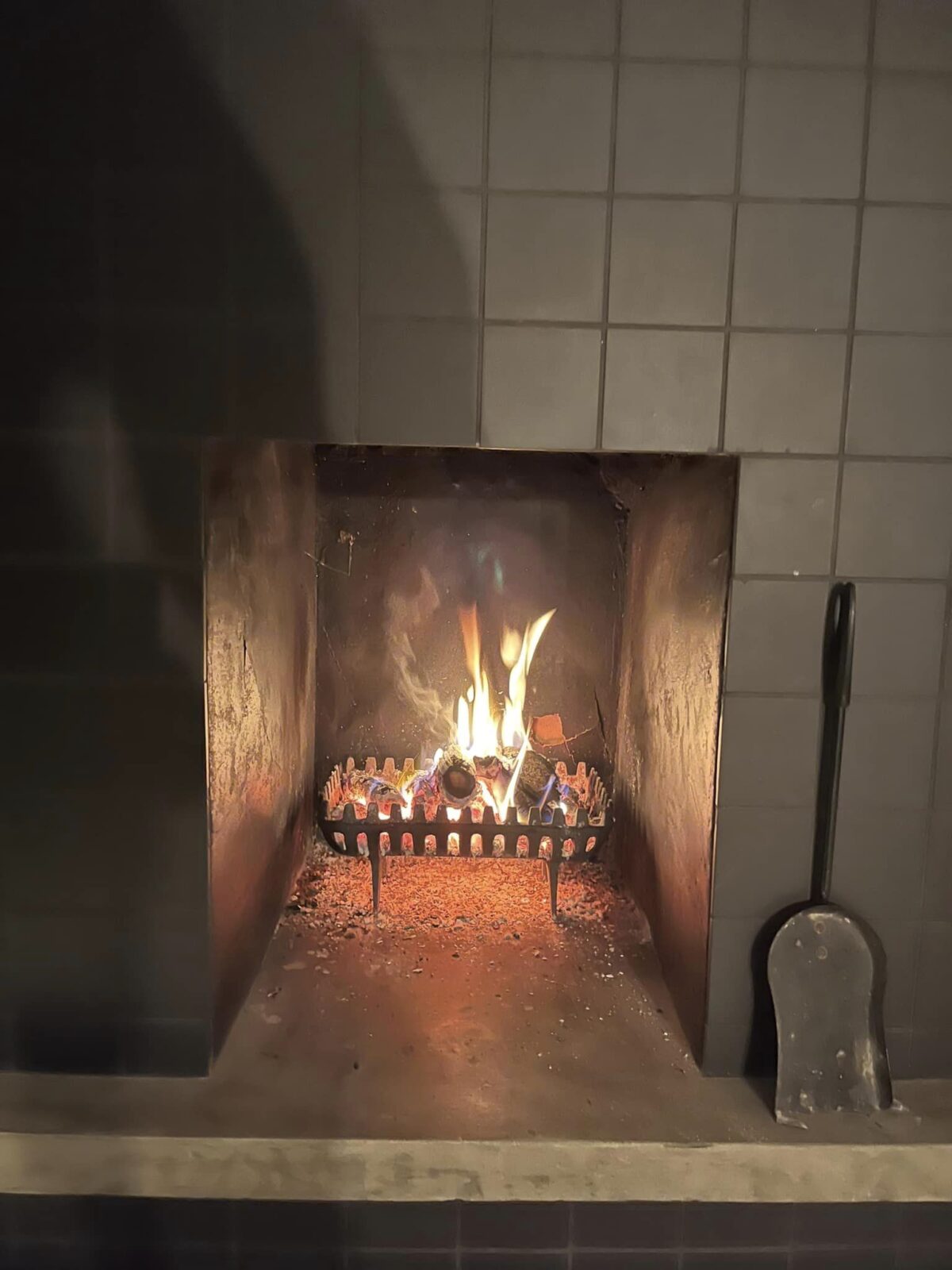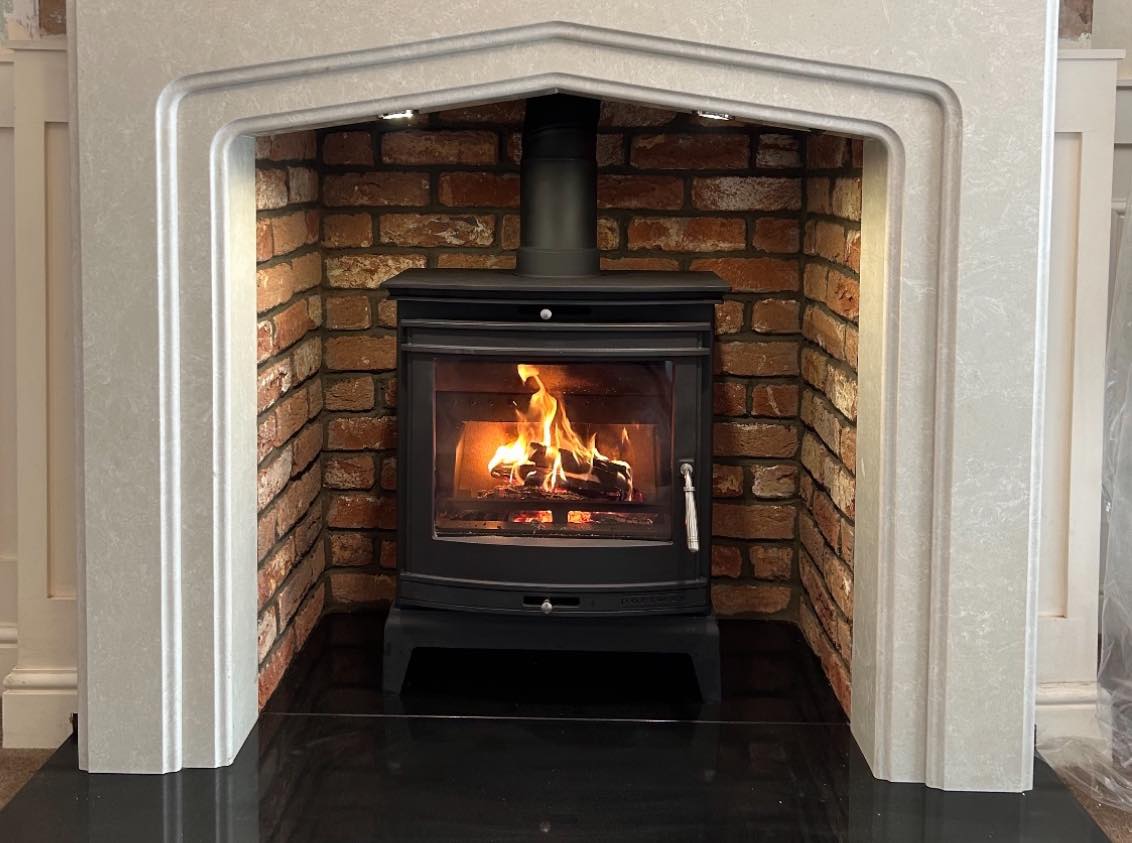Fireplaces, stoves, and inserts offer ways to heat homes, but they all vary in form and function and have distinct benefits. Given these differences, which one suits your home best?
You’ll want a heating place that looks nice, but beyond that, consider your lifestyle, space, and energy needs.
In this guide, we’ll thoroughly compare a fireplace, stove, and insert to help you decide.
How to Choose Between a Fireplace, Stove, or Insert
An Overview
Fireplace
This is an architectural structure that is built into a wall or freestanding. It is made to contain fire for heating and providing ambiance within a room. A fireplace typically has a hearth, chimney or flue, firebox, and mantel.
There are wood, gas, and electric fireplaces.
Pros
- Authentic and beautiful.
- They are usually a room’s focal point.
- It offers an unmatched ambiance.
- Available in wood, electric, and gas options.
Cons
- It loses up to 80% of its heat. This makes it highly inefficient.
- High maintenance.
- It can compromise air quality.
Related Posts:
- Electric Fireplace Pros and Cons
- Wood Burning Fireplace Pros And Cons
- Best And Worst Types Of Wood For Fireplace
Stove
It refers to a freestanding heating appliance usually made of durable materials, typically steel or cast iron-made. A stove is generally made of a firebox, door, and vent pipe. You can insert a stove inside a traditional fireplace.
A fireplace stove emits heat that radiates all over the room, offering comfort and warmth. Wood, electricity, pellets, or gas fuel this appliance.
Pros
- Highly energy efficient.
- Modern stoves burn more cleanly.
- Suitable for small and compact spaces.
- It provides placement flexibility.
Cons
- Require regular cleaning and maintenance.
- It may require an ample floor space.
Insert
This is a self-contained heating unit fitted inside an existing fireplace. Inserts come in various colors and styles to accommodate different interior designs. It provides a cost-effective and easier way to upgrade your fireplace without a major remodel.
Inserts easily turn an open-hearth fireplace into a closed-combustion system.
Pros
- It offers improved efficiency.
- It burns more cleanly than an open fireplace.
- Easier to install and maintain.
- It accommodates different fuel options like gas, pellets, and wood.
Cons
- It detracts from the charm and the experience a standard fireplace offers.
Note
All fireplace inserts are stoves, but not all stoves are fireplace inserts.
A Detailed Comparison of a Fireplace, Stove, and Insert
Consider these factors when weighing between getting a fireplace, stove, or insert.
Fireplace, Insert Vs Wood Stove Heat Needs
Assessing your heat needs is crucial when picking a heating source. A fireplace is an excellent choice if you want to warm a room like the living room and keep it ambient.
On the other hand, a stove is a better choice as a primary heat source because it gives off more heat. Alternatively, put an insert inside the fireplace to get more heat without losing the ambiance and appeal of a conventional fireplace.
Fireplace, Insert Vs Wood Stove Efficiency
A conventional fireplace is the least energy efficient since it loses a lot of heat through the chimney. Therefore, you are better off picking either a stove or an insert if you are looking to minimize heating costs and keep the impact on the environment low.
Both stoves and inserts are more energy efficient because they have closed combustion systems—they radiate heat into the room rather than losing it via the chimney. But which one is more energy efficient?
A well-built and sealed fireplace insert is more efficient than a wood stove. Inserts and stoves also let you heat specific parts of your house. For instance, you can heat the whole floor with a well-placed stove. On the other hand, an insert will ensure specific areas stay warm.
Space Considerations
You require significant space to accommodate the chimney and the fireplace itself for a traditional fireplace. In addition, you must leave enough room between the fireplace and items in the room, especially combustible items like materials, furniture, and décor.
Since inserts go into a fireplace, they don’t take up more space. However, choose a stove if you don’t already have a fireplace, have limited space, or don’t want to construct a fireplace.
While a stove takes up less space than standard fireplaces and offers placement flexibility, you must place it where you can easily route venting. Also, leave enough space between the stove and the wall, as well as furniture.
Installation Costs
Installing a fireplace can be a costly project, especially if you are starting from scratch (constructing a chimney and doing the masonry work). It is easier to retrofit an existing one. It is also more affordable to install an electric and gas fireplace rather than a wood-burning fireplace.
The cost of installing a stove comprises the money spent on the unit, vent system, and labor. It is cheaper than a fireplace. Upgrading a fireplace with an insert is even more budget-friendly than installing a stove or a full fireplace.
Aesthetic Preferences
You can find a fireplace that suits your aesthetic needs. These structures come in the classic, homey look of gas or wood-burning fireplaces, the sleek, modern appearance of electric and contemporary fireplaces, and even a mixture of modern and traditional.
Stoves are also in numerous styles and finishes. Some look rustic, while others have a modern, clean appearance. They provide a multi-angled flame view.
An insert helps you preserve the appearance of your fireplace but elevates its efficiency. You can also customize its look to elevate the aesthetics of the space.
Ultimately, when it comes to aesthetics, your choice boils down to what you like most and complements the space most.
Maintenance Needs
Fireplaces, stoves, and inserts have different maintenance requirements; the type of fuel the unit uses extensively influences its maintenance needs. Below are the basic things you must do to keep each of these heating solutions in good condition.
- Wood-burning fireplace: remote soot and ash from the firebox, clean and inspect the chimney, clean and repair the masonry, and handle wood properly.
- Electric fireplace: dust and wipe the unit, check the power supply, and replace parts like LED lights.
- Gas fireplace: inspect the gas line and vent, clean the burner and surfaces, and repair damaged parts.
- Inserts: it is easier to maintain compared to an open fireplace.
- Stove: it needs regular ash removal, firebox cleaning, and periodic stovepipe and chimney inspection.
Summary
Clearly, fireplaces, stoves, and inserts have their specific strengths and downsides. Therefore, I wouldn’t tell you which one to pick because the best choice depends on what matters to you most. A fireplace fits the bill if you want an eye-catching focal point and ambiance and have a sizeable budget. An insert makes your fireplace more efficient and kinder to the environment. You’ll like a stove if you value heating power, efficiency, and flexibility the most.

Hi! I’m Susie, the creative mind behind Cozy Castle 101. I love sharing easy and simple ideas to make home and garden spaces cozy and inviting. From simple DIY projects and fun crafts to family-friendly recipes, I’m all about creating a warm, welcoming home where memories are made. Join me as I explore ways to add a bit of creativity and charm to everyday life!




